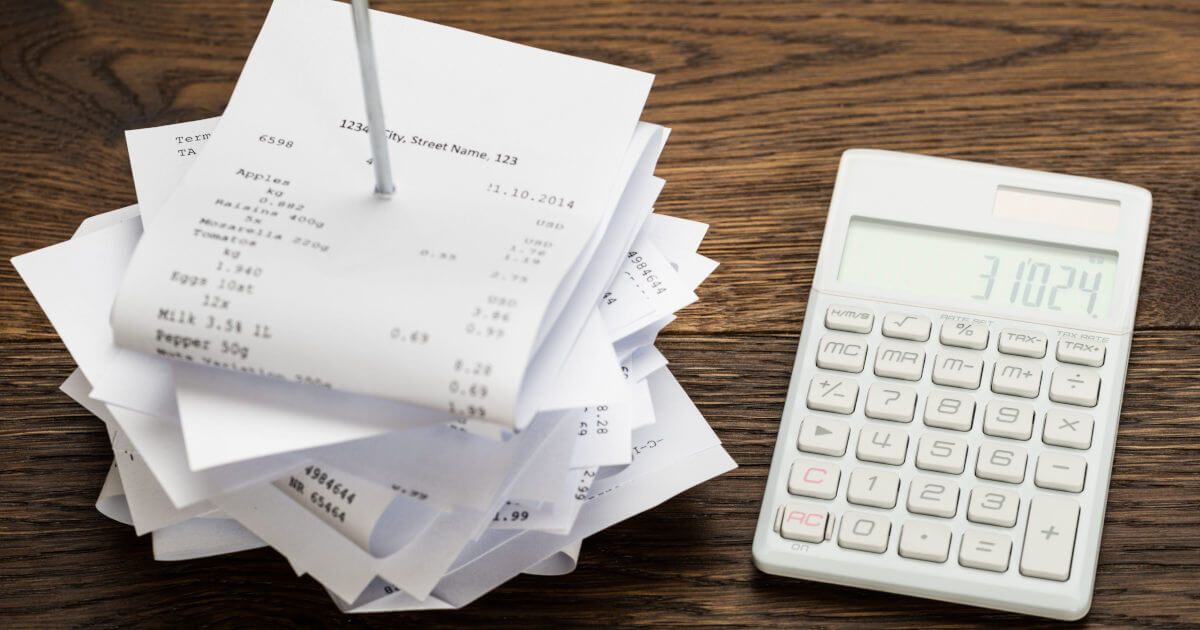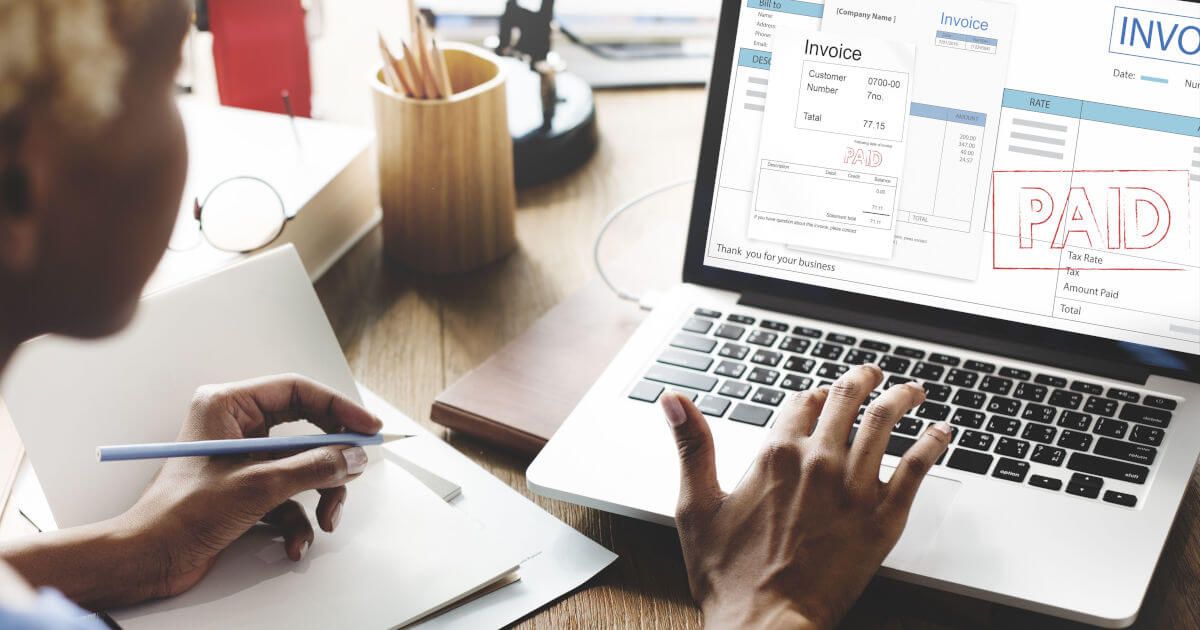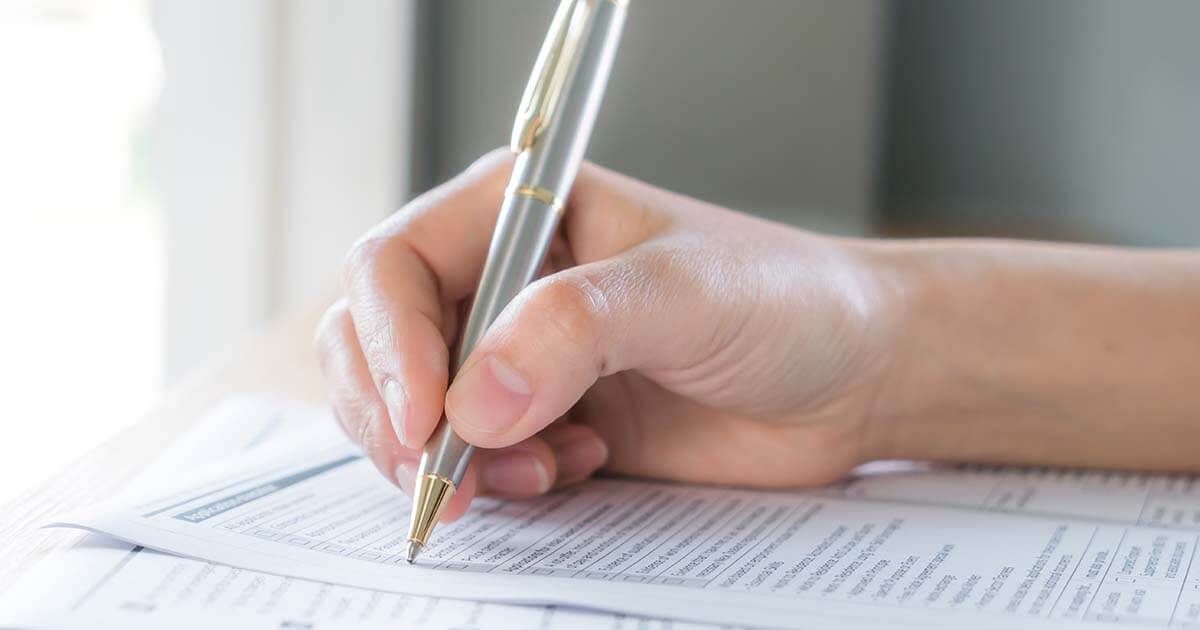Why are receipts important for good bookkeeping?
Keeping purchase invoices, otherwise simply known as receipts, is an integral part of the bookkeeping process for any business, freelancer, or household. The details of these should be recorded thoroughly in chronological order in preparation for tax returns. A purchase invoice is a type of source document – evidence of a transaction. Don’t underestimate the importance of receipts, it may seem tedious and unnecessary but holding on to documents is indispensable. A fundamental principle of reliable bookkeeping is that there should be no transactions without a receipt. This can minimise your taxable income, improve your chances of receiving a tax refund, and reduce the amount of time you need to spend on paperwork each year.
A ‘receipt’ is an umbrella term for different kinds of source documents or electronic references that record transactions, including invoices, purchase invoices, note payables, credit card slips, and salary rosters. The purpose of storing purchase invoices in this way is to document expenses and profits and record any changes in your materials. By documenting every receipt, a company’s activities are made certifiable, transparent, and easily comprehensible, making it one of the most important aspects of company accounting.
Another defining feature of receipts is the fact that, in the increasingly digitised arena of accountancy, they are a remnant of manual bookkeeping. These documents are physically issued, collected, stamped, and retained for future reference. But what is the most efficient way to legally manage all these documents? This article provides a run-down of the most important things to know about bookkeeping and handling purchase invoices and source documents.
How to manage receipts and purchase invoices
Organising your documents and references concerns everything surrounding the production, retention, and use of receipts. While commercial law does not prescribe a particular system for bookkeeping or regulating the organisation of accounts in detail, there are nevertheless a number of legal requirements and important information to keep in mind for efficient bookkeeping.
What information should be included on a purchase invoice?
Receipts and other types of source documents can vary massively in their appearance – for example, a run-of-the-mill receipt from a grocery store looks completely different to a purchase invoice, and that will differ again from a salary roster. However, there are four details that should appear on every kind of receipt:
- Text that describes the transaction
- The amount, quantity, and/or value of any money or goods exchanged
- The date of the transaction
- A signature of authorisation (this may be omitted for electronically generated purchase invoices)
If a purchase invoice is issued digitally, it should include an authentic electronic signature, otherwise the receipt cannot be used to claim input tax credits. If in doubt, it’s always possible to request an original receipt in paper.
If a purchase invoice is being used for a tax deduction, further information may be required. For more information on this, see the chapter on using purchase invoices for tax returns.
What are the different types of receipts?
A receipt is essentially written proof of any kind of transaction. Invoices are the most common type of receipt. These basically serve to document the demand for a fee or service. However, there is a wide variety of different types of receipts, each relating to a different kind of business transaction, both between a company and external agents, and internal daily business within a company. That’s why it’s important to distinguish between internal financial statements and external financial statements.
External financial statements include all receipts obtained from external sources, such as:
- Purchase invoices
- Bank statements
- Bills of lading and commercial letters
- Expense reports
- Tax assessments
- Commercial receipts
Internal financial statements, on the other hand, are handled internally within a company. These include:
- Wage and salary rosters
- Material withdrawal slips
- Transcripts of outgoing invoices
- Copies of receipts, commercial letters, cheques, etc.
- Proof of cancellations and transfers
Where the document originated from is the deciding factor in what constitutes an external financial statement and what is an internal financial statement. For example, with online banking statements, even if the company prints out the statement itself, it is still an external document, as it was created and provided by an external party. Furthermore, an invoice sent by mail also counts as an external document, even if it is printed independently.
In addition to internal and external documents, another important type of receipt is the corrective invoice, which is used as a replacement document if it’s necessary to reissue an invoice or receipt. It’s also possible to generate your own supporting documents [EN unavailable] here.
In order for them to be officially recognised, however, reissued receipts for large amounts of money should be exceptions and must not occur too frequently in order for them to be credible. However, it is relatively common to verify small amounts of change using reissued receipts – for example, tips, postage, parking fees, etc. As reissued receipts are handled internally within a company, they do not count as an internal document because they have a special status as a third type of receipt.
How do I record transactions when bookkeeping?
How exactly does one make an original entry of a transaction? After collecting all these receipts, how should you file them and keep them ordered? There are some fundamental rules to good bookkeeping to which every business must adhere. The first rule relates to the timing of the entry; in principle, any transaction should be documented in a timely manner. As a rule, all business transactions and accompanying documents should be transferred to your accounting journal by the end of the month.
Furthermore, you should take care to document all of your receipts without leaving any gaps. This means storing documents chronologically and comprehensively, with consecutive information. It is important that outsiders can clearly assign each receipt to a specific business transaction. Accounting stamps are an ideal way to take care of legibility, as these provide the most important information at a glance. This makes it substantially easier to file the documents correctly at the end of the month.
Many aspects of accounting are now digitised but the exact format you should use depends on your computer system. However, digital bookkeeping systems also depend on the being correct and clear.
Microsoft 365 with IONOS!
Experience powerful Exchange email and the latest versions of your favorite Office apps including Word, Excel and PowerPoint on any device!
Providing additional information
Some additional information must be provided to HM Revenue and Customs. The more thorough your documentation, the more likely it is that Revenue and Customs will class the majority of the expenses as tax deductible. However, different rules apply for each document type, so be sure to obtain specific additional information about the respective types of receipts when submitting documents for the tax returns. Exercise caution here as the information required varies widely – inaccurate documents are usually rejected by HM Revenue and Customs.
For example, for small sums, the full address of the accountant and the tax rate (this varies depending on the state and the business category) must be added. Higher amounts, on the other hand, require more detailed information, such as the tax number of the issuer and the addresses of issuers and recipients.
Furthermore, expense reports should always include information about the venue and staff expenses. Additional information is required for hospitality costs or expenses that might also have a personal use. For example, to claim transport expenses such as railway tickets and tax fares, you must provide information about your destination. If you were unable to obtain a receipt for these, you can also provide your own documents. The financial authorities should then be informed in writing or at least verbally regarding the specific circumstances.
Although each receipt requires specific information and supporting documents, there is a golden rule that applies in all cases: detailed information is always far more beneficial than making do with minimum requirements. For example, if a receipt only lists the item identification number and price, you should add details of the purchased item. The more precise, the better; for another example, if you buy a specialist textbook, you should note down the title of the book instead of simply writing ‘textbook’. If you submit documents that are clear, comprehensible, and correctly filled in, you can also use it as evidence for your tax returns.
Click here for important legal disclaimers.



